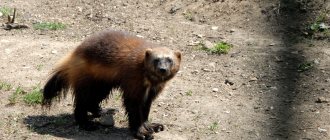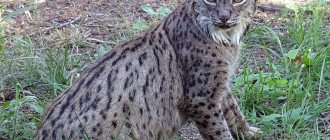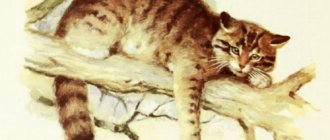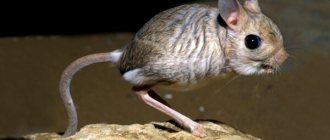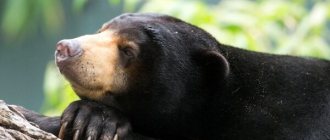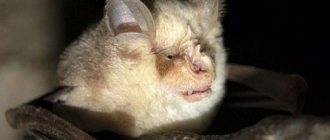The common lynx or Eurasian lynx is a small cat of the lynx genus, for which about ten subspecies are known. The species lives in the north of Eurasia, its range begins in Scandinavia and continues to the island of Sakhalin and Kamchatka. The lynx is found in China, Iran, Mongolia, Kazakhstan, Afghanistan, Pakistan, Nepal, Turkey, and Siberia.
In the center and west of the European continent, lynxes were exterminated in the middle of the last century. Now the population is being restored with success in the Carpathians (Poland, Romania, Czech Republic, Serbia, Slovakia, Herzegovina). So, on the territory of Romania it has already grown to 2000 individuals.
Description of the common lynx
— Advertising —
The lynx is a large cat with a body length of 80-130 cm, a height at the withers of about 70 cm. The length of the animal’s tail ranges from 11 to 25 cm. The weight of males is 18-30 kg, and that of females is less, 8-21 kg. . The largest individuals live in Russia in Siberia. The weight of local male lynx reaches 38 kg, and even 45 kg. Limbs are strong and long. The ears are decorated with black tufts of hair. The fur on the muzzle is long and grey-white. Summer fur is short, reddish or brown. In winter, it becomes thick and silky, and the color changes to silver-gray or grayish-brown. The belly and neck are white all year round. On the main background there are dots and stripes of black color. Dark brown stripes are located on the forehead. Lynxes that live in the south of their range are more spotted than those living in the north. The lynx's gait is such that the hind paws follow the footprint of the front paws.
Lynx are bred near Grodno
Lynx are bred near Grodno.
Not far from Grodno, in the village of Ozyory, there is the only animal farm in Belarus where lynx are raised in captivity. This is the second such farm in the countries of the former USSR. The first, Saltykovskoye, is located near Moscow. It was from there that the first predators came to Ozyory 18 years ago.
In Russia, wild cats are raised on an industrial scale. And director Vladimir Shishko jokingly calls our production amateur. Of course, compared to the number of American mink, of which there are hundreds of thousands on the farm, a dozen lynxes is a minuscule number. But the Russians have a little more of them - only 30.
Breeding lynx is a difficult and troublesome business. There are no books or methodology, everything is done by trial and error. Healthy offspring are not always obtained; not all puppies survive. However, according to the veterinarian, lynxes almost never get sick, except for sprained paws. But during childbirth, the help of a specialist is simply necessary; this process is complex and delicate.
The territory of the lynx farm is small. This is a row of two-story cages, from which an angry hissing and an unusual guttural meow can be heard when we appear.
“That’s how they talk,” the veterinarian smiles.
The cages are double fenced just in case. In order to show me the owner of the taiga in all her glory - and they raise East Siberian lynx on the farm - they open the door of the cage where the young animals sit. And I barely have time to dodge the heavy paw with claws. The cage is quickly closed. Yes, this is not a domestic cat at all, although it looks very similar! A male lynx can weigh up to 30 kilograms, and a female - 18 - 20. Their reaction, as I have seen, is lightning fast, and not surprising. The lynx tracks its prey from the trees and overtakes it in a jump. Therefore, big cats most often sit on a shelf under the ceiling, where they feel more confident and behave aggressively. But the workers talk to them kindly.
“We’ve known them since childhood!” - they say.
Recently, in addition to the East Siberian lynx, fur farming also acquired ours, the Belarusian one. It is smaller, but more beautiful.
You can’t just buy a lynx from us. The farm does not conduct retail trade and cooperates only with zoos and taxidermists who produce stuffed animals. But they don’t give away living animals for stuffed animals—only dead animals. But zoos are happy to take lynxes raised in Ozyory for permanent residence. For example, lynxes from the Grodno nursery live in Mogilev, the zoos of Belovezhskaya Pushcha and Buinichi Field. But in Russia you can buy lynx cubs. Last year there was a peak - the price for a lynx reached $3,500. People bought predators for their personal enclosures and backyards.
A lynx bred in captivity will not survive in the wild. She doesn’t know how to hunt, but a predator needs two kilograms of beef a day! Breeding lynx for the Grodno animal farm does not bring much profit - it is rather a hobby. In addition to lynxes, deer and wild boars that were injured and rescued from poachers are kept here.
Feeding characteristics of the common lynx
The diet of the common lynx includes small as well as large mammals and birds. She hunts hares, rabbits, marmots, squirrels, martens, foxes, roe deer, chamois, deer, and wild boars. It can feed on carrion, but prefers ungulates, especially in the winter, when small prey becomes less available. The predator also attacks domestic animals. An adult lynx eats about 2 kg of meat daily.
Distribution of the common lynx
The common lynx is the northernmost species of the cat family.
In Scandinavia it can be found even beyond the Arctic Circle. In Russia, the lynx lives in dense coniferous forests as far as Kamchatka and Sakhalin. The species is also found in the Carpathians, the Caucasus, Central Asia, and in countries such as Georgia, Estonia, Finland, Sweden, Poland, Czech Republic, Hungary, Romania, Spain, Serbia, Macedonia, Slovenia, Slovakia, Belarus, Croatia, Albania , Greece, Lithuania, Latvia, Ukraine, Armenia, Azerbaijan, Kyrgyzstan and Kazakhstan. Populations are small throughout. Previously, the species was widespread throughout Europe, but in the middle of the last century it was exterminated in the center and west of the continent. Now the population is gradually increasing.
European Lynx Population
The European lynx is a numerous species. Today there are 7 subspecies of the European lynx: • L. l. Dinniki lives in Iran, Turkey and the Caucasus; • Felis lynx: L. l. Carpathicus lives in Greece and the Carpathians; • L.l. Lynx are common in the East and North of Europe; • L.l. Kozlovi is found in Central Siberia; • L.l. Isabellinus is found in Mongolia and Kashmir; • L.l. Wrangeli are common in Eastern Siberia; • L.l. Neglectus lives in China and the Far East.
https://www.youtube.com/watch?v=riZR6tUcpkQ
If you find an error, please select a piece of text and press Ctrl+Enter.
Behavior of the common lynx
For life, the common lynx chooses dense coniferous forests and taiga.
Can live in forest-steppe, mountain forests, forest-tundra. This animal swims well and climbs rocks and trees. The lynx is characterized by a nocturnal and twilight lifestyle. At other times she sleeps in secluded places. Adult individuals live in separate areas with an area of about 20 km2. Males always have more territories than females. During the day, the lynx covers approximately 10-20 km. Prefers to hunt from ambush.
The lynx is a very cautious animal, but is not afraid of people. It can live in secondary forests, young forests, and when there is a lack of prey, it visits neighboring villages and even cities. Lynxes rarely attack people; they become dangerous only when wounded, when they can cause serious wounds to a person.
Lynxes are often called harmful predators, but their role in nature is equal to the importance of wolves: they destroy mainly sick and weak animals.
Originally from Pushcha
Alexander is a hereditary Pushchan resident. Like his father, grandparents, he was born and raised in the very heart of Belovezhskaya Pushcha. “Since childhood, my father dreamed of becoming a forester and after the army he came to forestry. Instead of discos, he disappeared into the forest. This is how he works in the forest all his life,” the interlocutor says about his family. The father, an avid hunter, wanted his son to follow in his footsteps. Alexander obeyed: he graduated from the forestry department of BSTU and got a job as a game warden in the national park: “I had both a gun and a hunting license, but I haven’t shot for 8 years.” When asked why he quit and exchanged his weapon for a camera, he answers evasively: “To understand the essence of hunting in Belarus, you need to work there. Two years was enough for me.”
In his free time, the guy concentrated entirely on photo hunting and ecotourism, fortunately, like his father, he spent his whole life in a protected forest, he knows all the nooks and habits of the inhabitants of the Pushcha. The photographer posts footage of some of these encounters, most often with bison, deer and pygmy owls, on Facebook. And they invariably cause a storm of enthusiastic reviews and likes. Everyone notes Pekach’s talent and the atmospheric quality of his work.
Reproduction of the common lynx
The mating season for the common lynx lasts from January to April. The duration of pregnancy is 67-74 days. Childbirth occurs in secluded places that are protected by tree branches and roots. The female makes a bedding in it from dry grass and animal fur. 1-4 kittens are born, blind and helpless, weighing 240-420 g. The fur of the babies is gray-brown. Adult coloration appears at the age of 3 months. Their eyes open at 2 weeks. Milk feeding lasts about 5 months, solid food appears in the diet from 6 weeks. The kittens spend the first 9 months of their lives near their mother until the next mating season begins. Females reach sexual maturity at 2 years, males at 3 years. Under natural conditions, the common lynx lives up to 15 years. In captivity, it lives up to 20 years.
Lifestyle
Males and females, in this case, lead quite different lifestyles. Thus, male representatives are by nature loners and prefer not to even get involved in fights. Females, on the contrary, spend almost all their time with their offspring, and if rare periods of loneliness occur, it is only when the lynx is in position. As for uninvited guests, the male can ignore his appearance or simply hide from the place. The female, on the contrary, will give a good beating and there will be no more visits to her territory. Speaking of territory, they mark it with their urine.
The size of the area occupied will also vary. Males need a lot of space - they assign from 100 to 200 square meters. Female representatives have more modest requests - 20-60 square meters is enough for them. Predators leave settled territories in exceptional cases - only when the situation at the place of residence is extremely unfavorable for living and raising children.
Natural enemies of the common lynx
The natural enemies of the common lynx are gray wolves and wolverines, which can catch and kill them. Therefore, from places where many wolves live, lynxes leave. Amur tigers also hunt these cats. In the south of the range, snow leopards and leopards pose a danger to predators.
In competition with hunters
Alexander was outraged by the recent attempt by hunters to lobby for permission to shoot wild cats:
— I am against lynx hunting. If there is a problem with it in some area, the animal can be caught and taken to nature reserves or national parks, where there are large forest areas and where there are conditions for the animal to live. To the same Nalibokskaya or Belovezhskaya Pushcha. In the modern world there are a lot of devices for humane catching, tranquilizers. But letting someone shoot at a rare animal just because there are a lot of them somewhere is somehow wild in our time!
“Hunters claim that the lynx destroys roe deer and deer calves, which they raise for their own needs.
— This is a well-known argument of hunting lobbyists. They say that the lynx strangles its prey, undernourishes it, hides it in “hovankas”, where it rots, but could be rationally used. But this is a cat, it cannot, like wolves, eat the whole animal. She has a different feeding principle: she immediately eats away the flesh, the back part of the carcass.
And the rangers find a buried roe deer and think that there are several such hiding places on the territory. But this does not mean that the lynx will not return for prey. It may take a couple of weeks for her to walk around her site. I saw on camera traps that a fawn that was killed by a lynx was eaten two days later by a herd of 10 wild boars. Foxes, crows, and other animals feed on its victims—nothing is lost, as hunters think.
Interesting facts about the common lynx:
- The industry uses lynx fur. It is thick, silky and tall, with guard hairs up to 5 cm long on the back, about 7 cm on the belly, the underfur is abundant and soft. The skin is colored from a reddish to bluish tone, the pattern is spotted. Lynx fur has always been highly valued. And since the middle of the last century, its price began to grow rapidly, and over the course of 20 years it increased from $73 to $1,300. This is due to the fashion for long-haired fur, among which lynx fur was the best and most popular.
- The main role of this predator is to regulate the natural balance of animals, since the predator exterminates weak and sick individuals.
- The tender meat of lynx resembles veal in taste, but it is practically not consumed as food. It was popular only in Ancient Rus', where it was considered a delicacy and served as a decoration for the richest feasts.
- The lynx is a symbol of completeness and visual acuity. It adorns the coats of arms and flags of many cities and countries.
About lynx surveys in Belarus
— Are there many forest cats in Belovezhskaya Pushcha?
- No one knows. There is no real picture in the context of the two countries. In the Polish part of Belovezhskaya Pushcha, the last studies involving radio-collaring of lynxes were carried out in the early 1990s and 2000s. When I came to work as a game warden, the number of Red Book hunters was determined by the method of winter route surveys. It is still used by the Ministry of Forestry and national parks. This is when animal crossings in the snow are counted on a certain route during the day. And then they multiply the number by correction factors. When I tried to understand the accounting system, one huntsman who worked in the Pushcha for 40 years said to me: “Sashka, don’t you know the formula “2P4S”? I looked at the floor, ceiling and walls and wrote down the numbers.” This is how the number of animals is drawn. And when the Ministry of Forestry says that the number of lynxes has doubled, although the census this winter took place without snow, such figures can be safely crossed out with a red pen.
For example, as part of a project by the Frankfurt Zoological Society, we installed about 20 camera traps to look at the activity of predators.
So, over the course of 5 years, they only filmed two shots of the lynx! That is, in Belovezhskaya Pushcha there is no sky-high density of lynxes, and one cannot say that there are plenty of them there.
Only once was I lucky enough to see 4 lynx tracks at once. At first I didn’t believe it, I thought it was wolves. It was a family: a female and three lynx cubs. It was clear from the tracks that they were running, playing in the clearing, fooling around, as cats love to do. I don’t know their further fate.
Lynx prefers to walk along forest clearings, especially in winter. The habitat area of one male can reach 600 km2! In Belovezhskaya Pushcha I saw marks and traces that led from the border with Poland deep into the forest on our territory. I walked over them. The result was a zigzag route 16 km long. It ran through the territory of 3 forest districts!
If a huntsman sees a lynx on his property, this does not mean that it lives there. Tomorrow she will move to another forestry, then to a third. And this beast will be counted in everyone. So it turns out that according to the census, instead of one lynx, there are three! This greatly increases the number in the region. Maybe somewhere its quantity remains at a certain level. But this does not mean that it will be the same elsewhere.
Lynx trail.
